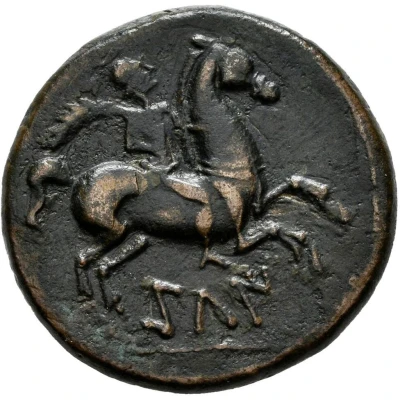


© Tauler & Fau Subastas
Unit 175 BC - 126 BC
| Bronze | 11.7 g | 24.5 mm |
| Issuer | Kili (Edetani people) |
|---|---|
| Type | Standard circulation coin |
| Years | 175 BC - 126 BC |
| Value | 1 Unit |
| Currency | Unit (mid 2nd century BC) |
| Composition | Bronze |
| Weight | 11.7 g |
| Diameter | 24.5 mm |
| Shape | Round (irregular) |
| Technique | Hammered |
| Demonetized | Yes |
| Updated | 2024-10-10 |
| Numista | N#316303 |
|---|---|
| Rarity index | 95% |
Reverse
Horseman riding right, holding palm leaf.
Script: Iberian (Levantine)
Comment
Reverse inscription:"KiLI" written from left to right in northeastern (Levantine) Iberian script.
Interesting fact
The coin from Kili (Edetani people) made of Bronze weighing 11.7 g is interesting because it represents a unique blend of ancient technology and cultural exchange. The use of bronze, a metal alloy made from copper and tin, was a significant technological advancement at the time, and the fact that it was used to create a standardized unit of currency speaks to the sophistication of the Edetani people's economic system. Additionally, the fact that this coin was produced during a time of cultural exchange between the Edetani people and other civilizations in the region highlights the importance of trade and diplomacy in shaping the development of early societies.